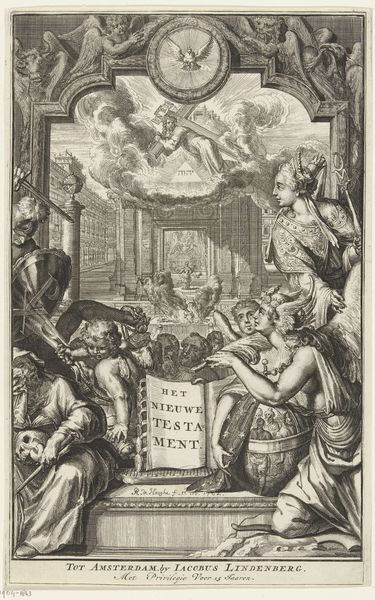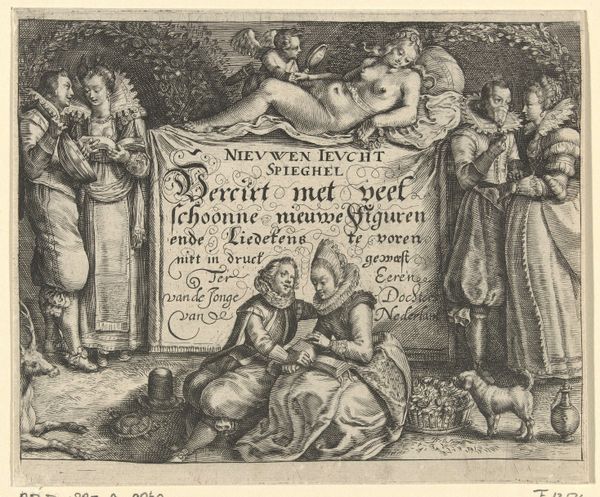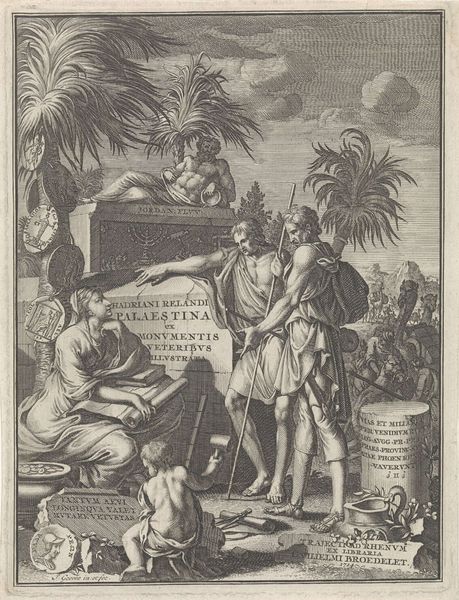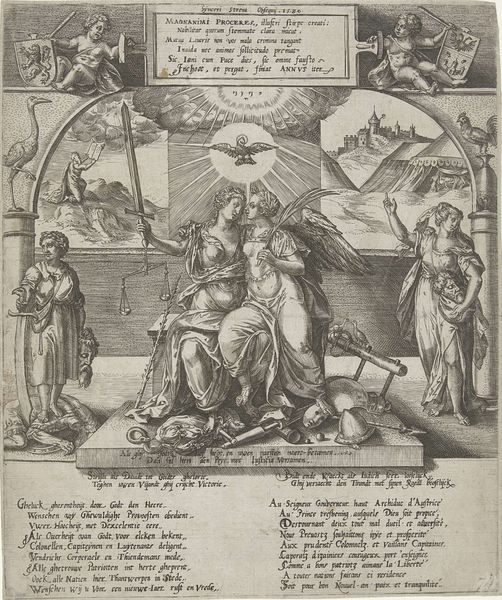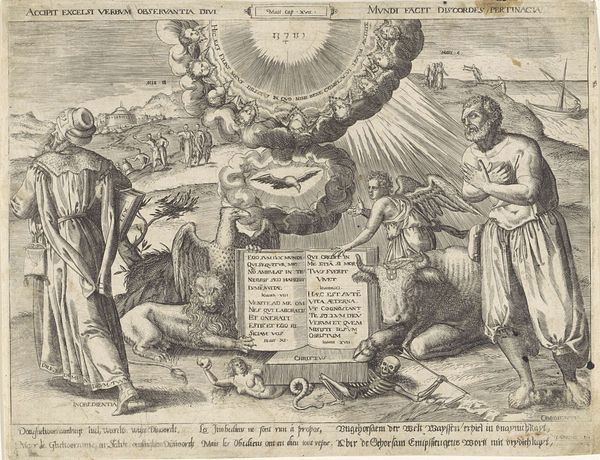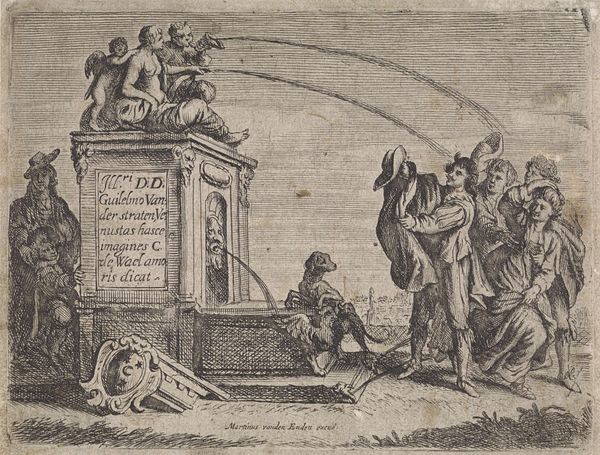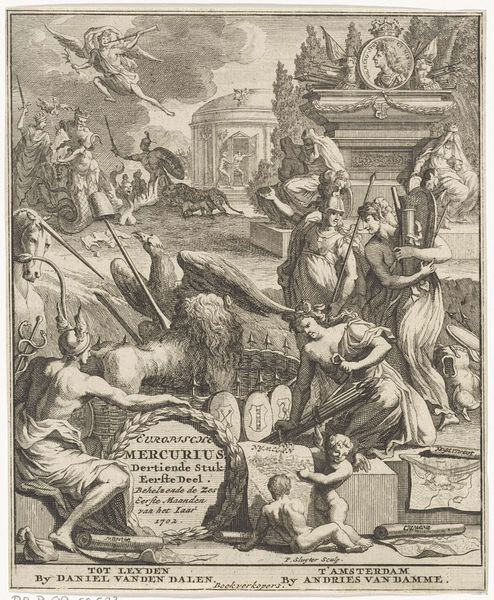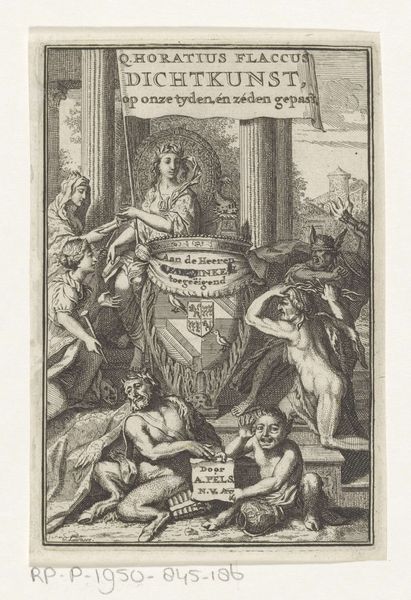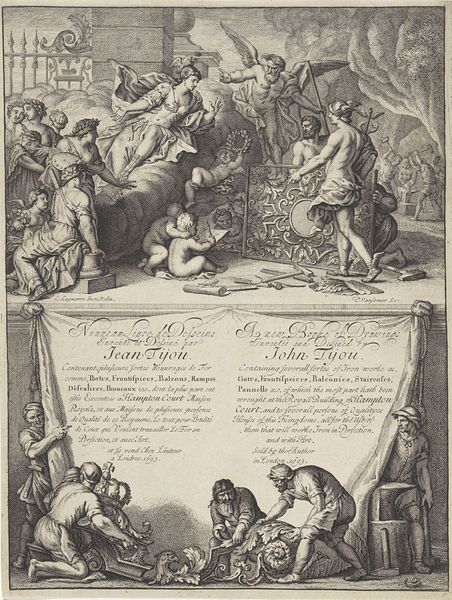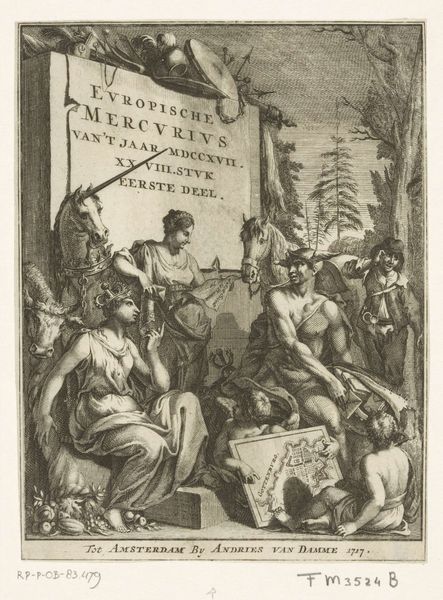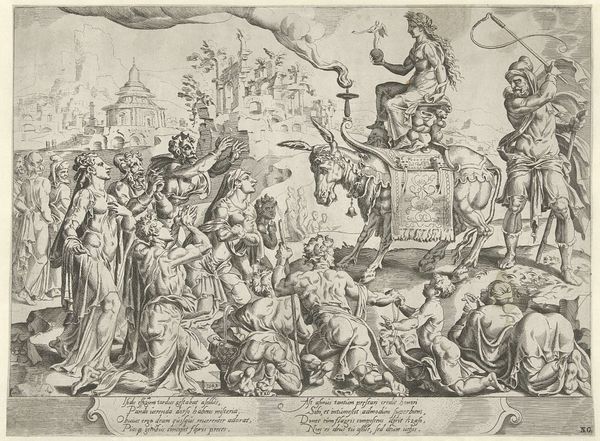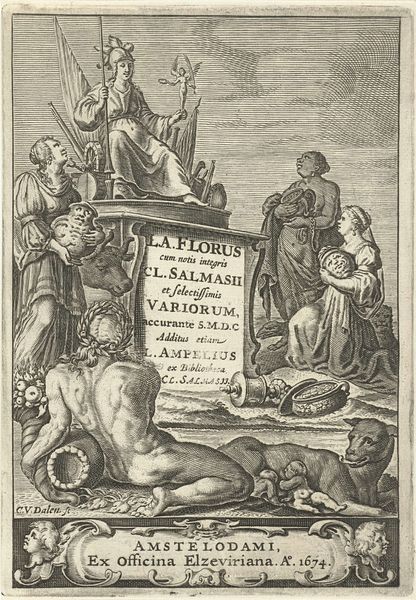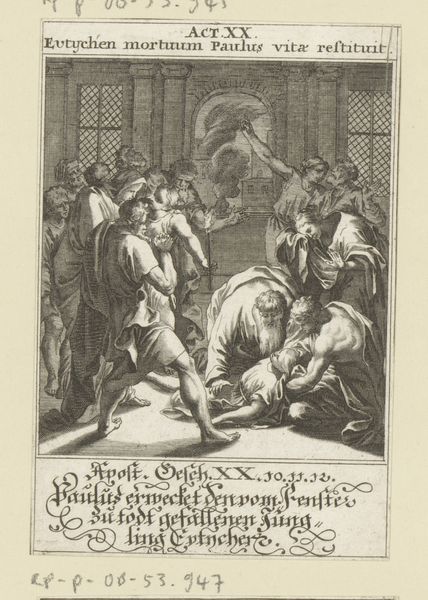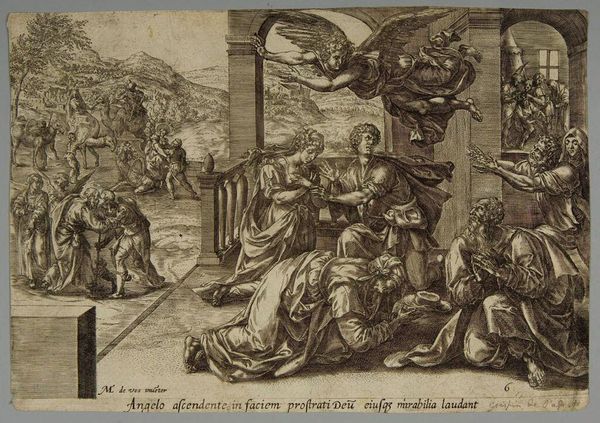
Titelpagina voor "Begin ende voortgang vande Vereenigde Neederlandtsche geoctroyeerde Oost-Indische Compagnie", 1646 1646
0:00
0:00
#
pen drawing
#
pen illustration
#
pen sketch
#
personal sketchbook
#
sketchwork
#
pen-ink sketch
#
pen work
#
sketchbook drawing
#
storyboard and sketchbook work
#
sketchbook art
Dimensions: height 159 mm, width 216 mm
Copyright: Rijks Museum: Open Domain
Editor: This is the title page for "Begin ende voortgang vande Vereenigde Neederlandtsche geoctroyeerde Oost-Indische Compagnie" from 1646, by Hessel Gerritsz, currently housed at the Rijksmuseum. It’s a pen drawing that really captures a mood of... well, power and perhaps a hint of colonial ambition. There's so much symbolism here. What do you see in this piece? Curator: Ah, yes, quite right. This isn't merely a title page; it's a visual manifesto. Consider how the figures interact: the Dutch traders ascending over what appears to be a subjugated sea god, Neptune. Observe the personification of the East Indies offering their bounty. How do you feel those symbols communicate cultural power at the time? Editor: It's quite striking. The Dutch figures are literally stepping on Neptune, symbolizing dominance over the seas, while the East Indies figure seems almost... submissive in her offering. But it feels more complicated. I am seeing so many visual codes relating to trade, power and colonialism. Curator: Exactly! The details—the cornucopia of spices, the riches being offered—those speak to the economic engine driving the VOC. But note the idealized depiction of both the colonizer and the colonized. Are we truly seeing the realities of colonial exchange here, or a carefully constructed narrative? Editor: That's a great point! It's less a reflection and more of an ideological representation, carefully crafting an image of benevolent trade rather than harsh colonial exploitation. Curator: Precisely. So next time you encounter images like this, reflect not just on what is depicted, but whose story is being told, and perhaps more importantly, what is being conveniently left out of the frame? Editor: Thank you; that's definitely changed how I view it. It's much more than just an old drawing; it is a powerful message that speaks volumes about the era's mindset. Curator: And its long-lasting cultural impact. We are still grappling with these images today!
Comments
No comments
Be the first to comment and join the conversation on the ultimate creative platform.
